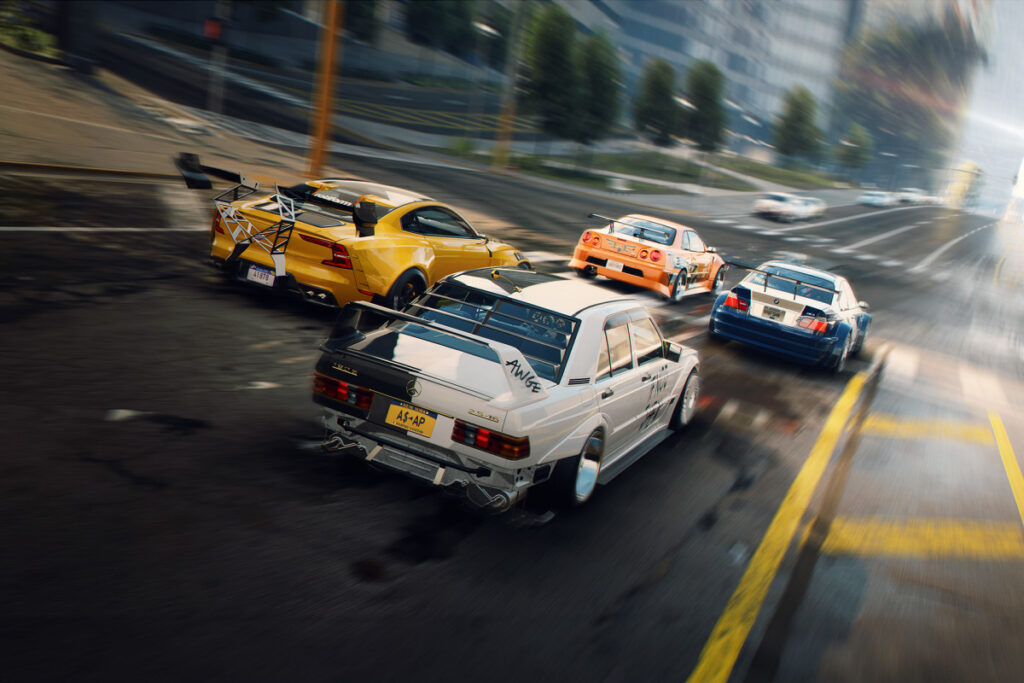Five Reasons Why We Love The BMW M3 GTR

For as long as the racing game has existed, so has the associated ‘hero’ car, which then becomes synonymous with that title forevermore.
Think Ferrari’s Testarossa in the original Outrun or the famed WRC Toyota Celica GT-Four from Sega Rally in the early ’90s. Both are undeniably cool cars in their own right, then elevated to cult status through a gaming collab.

But every so often, a partnership comes along which goes far beyond simple association, instead becoming the sole reason for a car’s fame, especially when that game stands the test of time across multiple generations.

We’re talking about the BMW E46 M3 GTR and Need for Speed Most Wanted from 2005, of course. And by no means are we suggesting that the M3 GTR’s racing merits pale in comparison to its digital footprint, but rather embracing the fact that – nearly two decades on since Most Wanted launched – it continues to be revered and celebrated by past, present and future gamers around the world.


If you saw our story last week unveiling the ultimate Most Wanted M3 GTR tribute, you’ll be loosely familiar with the backstory on how this iconic race car first came to light and what made it so fast within the ALMS (American Le Mans Series) it initially competed in.

We’ve got a full, in-depth history on the M3 GTR landing very soon (including the E36 M3 GTR that predates it along with the über-limited Strassenversion), but until then, we wanted to dive into five key reasons we still adore this car over two decades on, and why it resonated so well with Need for Speed players. And that’s before we get into the fan-built replicas being created every year in tribute…
1. It’s A Motorsport & Gaming Icon
We’re starting with the most obvious one here, but few other cars have captured this level of following by both racing and gaming fans worldwide. First launched in 2001 to compete within their fierce ALMS GT series, BMW had previously raced the E46 M3 with its straight-six engine but feared it wouldn’t be potent enough to compete against its rivals, including Porsche and Corvette.

Instead, BMW got creative and exploited a little loophole designed to give them a competitive advantage. The straight-six was ditched in favour of a super compact, super lightweight V8 engine dubbed the P60B40. The catch? They’d need to produce at least 10 road-going examples to homologate it for racing.

That’s exactly what BMW planned to do, building 10 ‘Strassenversion’ M3 GTRs with the plan of selling them individually for €250,000 (approximately US$262,500 in today’s money) a piece. They were never officially sold, and of the 10 developed, just three exist, all owned (and displayed) by BMW.

For the 2002 season of the ALMS, BMW would be required to build 100 vehicles and 1,000 engines to then be eligible to compete – something they decided against.

But before thinking this was a waste, not only did BMW dominate the 2001 season (which triggered this increase in production), but it also paved the way for the E46’s successor – the E92 M3 – to then be equipped with a V8 from the factory, coincidentally returning to race in the ALMS GT2 category several years later in 2009.
2. Its Thunderous P60B40 V8 Engine
The M3 GTR may be the first official V8-powered E46, but it wasn’t the only one in existence. Because back in 2000, BMW North America joined forces with Prototype Technology Group (PTG) to build a V8-powered E46 M3 for the Rolex Grand-Am Series.

Where the two cars differ is the V8 engines being used. In the PTG cars, a heavily reworked S62 was fitted that was otherwise found within the E39 M5 and Z8. But in the M3 GTR? An entirely new engine was created solely for racing.

Produced between 2001 and 2005 for BMW’s Sports Car Racing program, the P60B40 was only ever used in two models: the M3 GTR race car and the M3 GTR Strassenversion (albeit detuned to around 380bhp).

With a 4.0-litre displacement, a 12.0:1 compression and a flat-plane crankshaft, the P60B40 developed 444bhp at 7,500rpm initially despite having two 30.4mm restrictors in place. Later versions of the V8 produced closer to 500bhp, but its compact and lightweight construction allowed BMW to keep the M3 GTR race car’s weight at just 1,100kg (2,425lbs).
3. Its Iconic Status Within Need for Speed
The M3 GTR first appeared in Most Wanted back in 2005, but did you know it has been included in multiple Need for Speed titles ever since then?

Carbon, World, Most Wanted (2012), No Limits, Edge, Heat and, of course, Unbound, to name a few. In most cases, it’s always been unlockable content later down the line – and in some cases, just a body kit/tribute – but such has been its effect on Need for Speed players worldwide it continues to be replicated even in those games without its official livery or inclusion.

In fact, in Unbound, not only does the OG M3 GTR appear, but so does a special NFS 30th Anniversary edition too, which encapsulates four distinctive hero car liveries into one.
4. That Incredible Gearbox Whine
If you played the original Most Wanted, you’d have heard that – on top of the V8 engine noise – there was a very distinctive whine that got louder the faster you went. That wasn’t an accident; Need for Speed wanted to replicate the sound as close as possible to the actual racing car, and that included the almighty whine associated with its racing gearbox.

Naturally, there’s some incredible footage out there of the M3 GTR’s Hewland gearbox making all the right noises. But what some people don’t realise is that it wasn’t always a sequential fitted; at first, it was a 6-speed manual before shifting to the sequential a few years later.
5. Its Iconic Livery & Wide-Body Styling
We’re not just talking about the blue and silver Most Wanted livery here. Look throughout the M3 GTR’s racing history between 2001 and 2005, and you will find various iterations from the blue/white Team BMW Motorsport cars used within the ALMS right through to the red/white/blue cars from the Nürburgring 24 Hour race.


Naturally, these particular body kits were never sold officially outside of racing. Constructed entirely from carbon fibre, the M3’s width is pumped up by over 100mm compared to stock – essential for housing the 11.5-inch slick tyres fitted to BBS RE594/595 wheels.

An original kit would’ve cost far more than €25,000 (US$26,250) depending on what wing/splitter you opted for, but thankfully, there are plenty of similar (cheaper) versions out there for anyone wanting to embark on their own BMW M3 GTR tribute…
The Speedhunters
Instagram: thespeedhunters






























